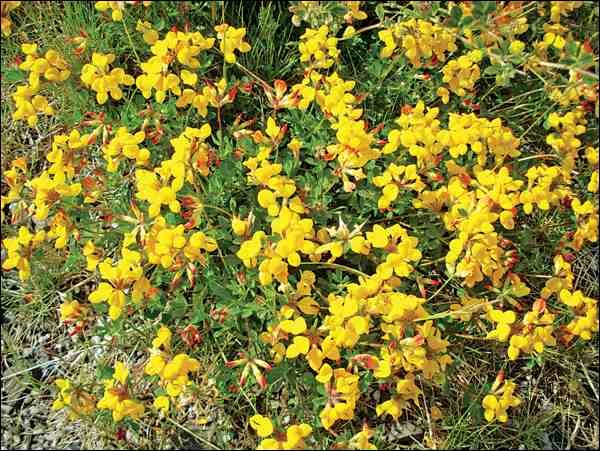Common plant names have many sources and can refer to appearance, resemblance to body parts and medicinal/culinary/cultural use. And while the exact origin of many plant names is lost to the mists of time, they can provide a window to the past - how plants were used in people's everyday lives.
In Western culture, many plants were used allegorically, as Christian symbols. While the religious references in plant names persist, their religious significance is no longer at the fore. The following are a few 'religious' plants we can grow on the prairies.
The Lady in Lady's mantle (Alchemilla mollis) is Mary, mother of Christ. An older name for this plant was in fact Mary's mantle. A mantle is an outer garment - a cape - that the leaves in miniature resemble. The plant forms a well-behaved mound (45 - 60 centimetres tall and wide) of light green leaves in early spring, overtopped with a masses of small yellow flowers in June that can be used as fresh cut flowers. It's adaptable to full sun to light shade.
In the Book of Genesis, Jacob dreamed of a ladder that reached into the heavens. The closely spaced, paired leaflets of the plant version of Jacob's ladder (Polemonium caeruleum) resemble ladder rungs hence its name. Jacob's ladder is medium tall, up to 60 centimetres (some cultivars can reach 90 centimetres), but hardly reaches into the heavens. Small, bell-shaped flowers form at the end of stems appearing in late spring/early summer. Depending on the cultivar, flowers can be blue, purple, lavender, pink or white. There are also variegated-leaved varieties to choose from. It grows best in moist shade but will survive drier (but not drought), sunnier locations.
Marks on the rhizomes (underground stems) of Solomon's seal (Polygonatum sp.) are said to resemble King Solomon's signet ring or seal (i.e. the Cross of David). Branchless arching stems have alternate, dark green leaves along nearly their entire length. The usual species and cultivars rarely reaches taller than 60 centimetres although giant Solomon seal may reach 120 centimetres. Small white, bell-shaped flowers hang down from the leaf axils in summer followed by black berries. A woodland plant, it prefers moist (although tolerates moderately dry once established) and shady conditions. It spreads slowly, forming a loose colony but is easily controlled with a judicious spade. A variegated variety is available that spreads more slowly.
Mary's shoes is now more familiarly called bird's-foot trefoil (Lotus corniculatus). Again the Mary refers to Jesus's mother and the flowers resemble fancy golden shoes (if you use your imagination). The long stems (up to 50 centimetres) creep along the ground. The low growing plant (five - 15 centimetres) makes a great groundcover in dry, open conditions and is tolerant of trampling and mowing. It forms a dense mat, suppressing weeds. It is also used in pasture/hayland as a forage.
Legend has it that Mary spread her cloak on the ground to rest. Under the cloak was a white-blossomed rosemary bush (Rosemarinus officinalis). When she got up to leave and picked up her cloak, the flowers had turned blue, the colour of her cloak. Rosemary is a Mediterranean plant (think hot and dry) and is not hardy. Despite its lack of hardiness, it is grown in many a herb garden as an annual and is easily over wintered as a houseplant.
Have a gardening question? Contact GardenLine, 306-966-5865 or [email protected].
- This column is provided courtesy of the Saskatchewan Perennial Society (www.saskperennial.ca; [email protected]). Check out our bulletin board or calendar for upcoming horticulture events in July.




